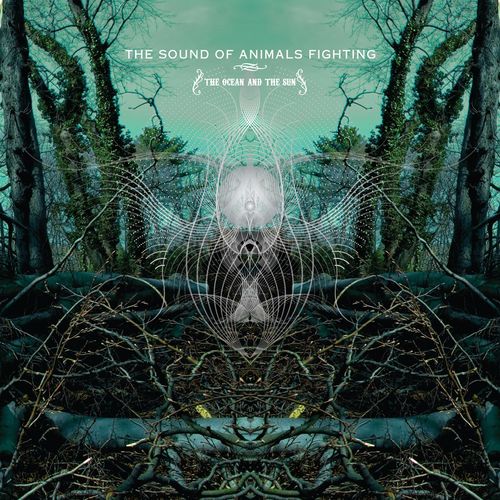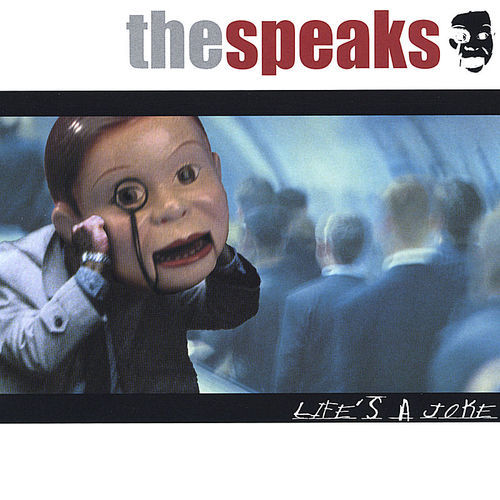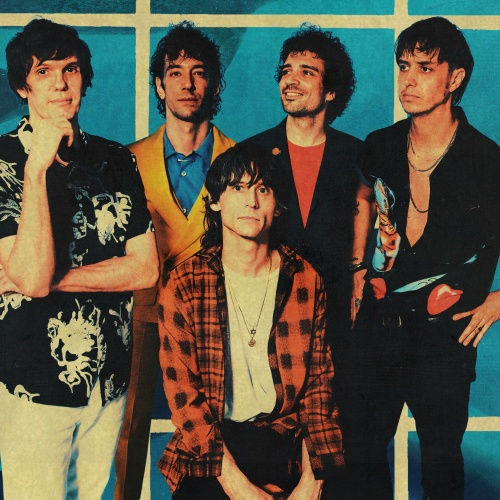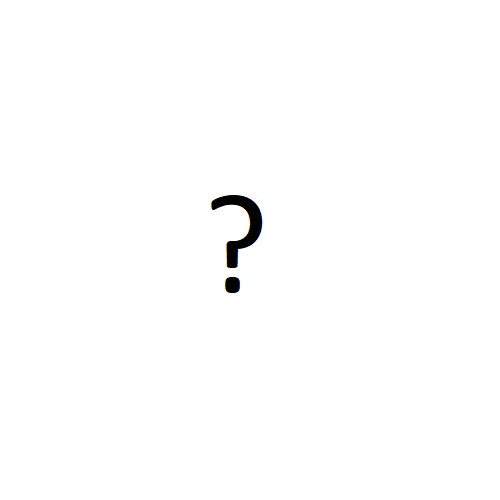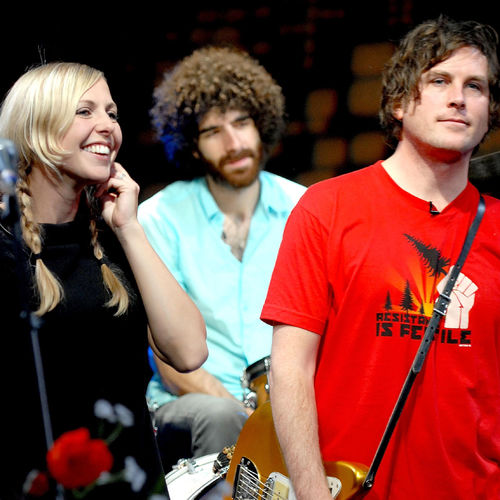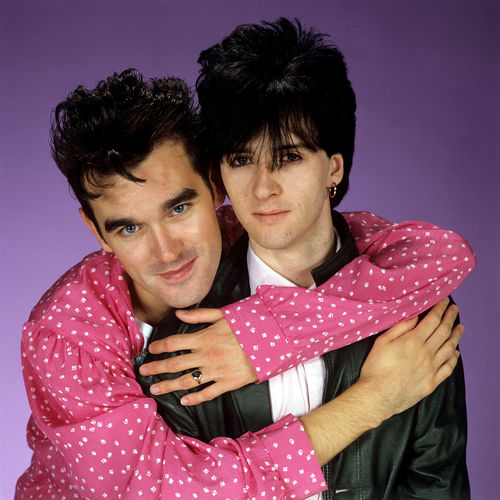
Biografía:
The Smiths fue una banda de rock formada en Manchester, Inglaterra en 1982 por el cantante Morrissey y el guitarrista Johnny Marr. La banda disfrutó de un éxito considerable hasta su separación en 1987. Su música ha sido de gran influencia en la música indie.
Dos de las cosas más notables del grupo fue su polémico cantante, un avezado lector fanático de Oscar Wilde y James Dean, con sus no menos polémicas letras repletas de poesía y la música compuesta por Marr
Read more on Last.fm

Otras canciones:
- A Rush And A Push And The Land Is Ours
- Ask
- Asleep
- Bigmouth Strikes Again
- Cemetery Gates
- Frankly Mr. Shankly
- Girlfriend In A Coma
- Hand In Glove
- Heaven Know I'm Miserable Now (alternative)
- Heaven Knows I'm Miserable Now
- Heaven Knows Im Miserable Now
- How Soon Is Now
- How Soon Is Now (charmed Theme)
- I Know Its Over
- Paint A Vulgar Picture
- Panic
- Please, Please, Please Let Me Get What I Want
- Please, Please, Please, Let Me Get What I Want (alt Ver)
- Pretty Girls Make Graves
- Reel Around The Fountain
- Some Girls Are Bigger Than Others
- Stop Me If You Think You've Heard This One Before
- There Is A Light And It Never Goes Out
- There Is A Light That Never Goes Out
- There Is A Light That Never Goes Out (easier Key)
- This Charming Man
- What Difference Does It Make
- Heaven Knows I’m Miserable Now
- Please, Please, Please
- Stretch Out And Wait
- Accept Yourself
- Cemetry Gates
- Death Of A Disco Dancer
- Frankly Mr Shankly
- Girl Afraid
- Golden Lights
- Half A Person
- Headmaster Ritual
- I Dont Owe You Anything
- I Started Something
- I Want The One I Cant Have
- I Wont Share You
- Is It Really So Strange
- Jeane
- Last Night I Dreamt That Somebody Loved Me
- Margaret On The Guillotine
- Meat Is Murder
- Money Changes Everything
- Never Had No One Ever
- Nowhere Fast
- Please Please Please Let Me Get What I Want
- Rubber Ring
- Rusholme Ruffians
- Shakespeares Sister
- Sheila Take A Bow
- Shelia Take A Bow
- Shoplifters Of The World Unite
- Still Ill
- Stop Me If You Think Youve Heard This One Before
- Suffer Little Children
- Sweet And Tender Hooligan
- That Joke Isnt Funny Anymore
- The Boy With The Thorn In His Side
- The Headmaster Ritual
- The Queen Is Dead
- These Things Take Time
- This Night Has Opened My Eyes
- Unhappy Birthday
- Unloveable
- Vicar In A Tutu
- Well I Wonder
- What Do You See In Him
- What She Said
- William It Was Really Nothing
- Wonderful Woman
- Work Is A Four Letter Word
- You Just Havent Earned It Yet Baby
- Youve Got Everything Now
¡Cuatro años de duro trabajo!Este mes de mayo cumplimos cuatro años al aire. Seguimos trabajando en la difusión de este maravilloso instrumento, ¡gracias por participar en nuestra historia!
Marr, multiple guitars, pain in the arse...
Transcribed for relative BEGINNERS/INTERMEDIATE, hence plenty of explanation.
Watch for strumming, accentuation of certain strums to get it to sound right etc. Play
at the right volume and you'll know when it doesn't sound right, rhythm wise.
(1)*Intro:
e--0--|--2--|--2--|--2--|--0--|--0--|
B--0--|--3--|--3--|--3--|--3--|--0--|
G--0--|--0--|--0--|--0--|--0--|--1--|
D--0--|--0--|--0--|--0--|--0--|--2--|
A--2--|--2--|--2--|--2--|--2--|--2--|
E--3--|--3--|--3--|--3--|--3--|--0--|
Intro Fingering for the G6's/7's: ring finger on the fat E, middle on the A, 4th and 1st
on the B + skinny E string.
*Read the chords carefully, you should see 4 changes, strummed 6 times.
(2) Use the intro pattern for the main part of the verses, obviously strumming more on
E etc.
(I alternate the E with an E7 - just remove 3rd finger from D string and then roll back
the E by putting back the 3rd finger - just for colour. You'll know when to do it).
(3) First change from that ("Two, long, years... etc).
e--7--|--5--|--5--|--5--|--3--|
B--7--|--5--|--5--|--5--|--3--|
G--7--|--6--|--7--|--6--|--4--|
D--9--|--x--|--x--|--x--|--5--|
A--9--|--7--|--7--|--7--|--5--|
E--7--|--5--|--5--|--5--|--3--|
Bm A7 A7sus4 A7 G
* Two * Loooooooooong *Years
These are all bar chords. The final chord (Years) is, of course, strummed multiple
Work it out!
(Where 'x' = mute: just relax the first finger bar around that string. Dead easy. You
really need to mute the 7th fret D string IF you just use your little finger to bar the
fret alternation - i.e. fret the 7th D with your little finger and flatten it to fret
string on the 7th fret, then lift off: you know what I mean! Alternately, just play the
bit as one simple A maj bar chord).
**The very next two chords are E and A. You might want to do another alternating bit
the E chord - to mimic the second guitar. To do this, just add the little finger to the G
on the 2nd fret for one strum and then lift off, then go into the A. Simple.**
(4) Going into the chorus: "And if you have five seconds to spare".
e--2--|--2--|--2--|--3--|--3--|--2--|--0--|
B--2--|--2--|--2--|--3--|--3--|--3--|--2--|
G--2--|--3--|--3--|--4--|--4--|--2--|--2--|
D--4--|--4--|--4--|--5--|--5--|--0--|--2--|
A--4--|--4--|--4--|--5--|--5--|--x--|--0--|
E--2--|--2--|--2--|--3--|--3--|--x--|--x--|
F#m F# G D A
Strummed more or less as the chord diagram shows.
(Though you could throw in a bit of muted 'chack', the way you sometimes do when playing
especially after the barred G chord - **in fact you might play that G 3 times, not two
shown in the diagram, but the 3rd time really briefly just before going into the D chord).
"Then I'll tell you the story of my life"
e--2--|--2--|--2--|--3--|--3--|--3--|--3--|
B--2--|--2--|--2--|--3--|--3--|--3--|--3--|
G--2--|--3--|--3--|--4--|--4--|--5--|--4--|
D--4--|--4--|--4--|--5--|--5--|--5--|--5--|
A--4--|--4--|--4--|--5--|--5--|--5--|--5--|
E--2--|--2--|--2--|--3--|--3--|--3--|--3--|
(As previous) G Gsus4 G
Again, on the last three strums of this bit, just start with the barred G, then flatten
little finger to make the change from 4th string 4th fret to 4th string 5th fret and
un-flatten little finger to go back to the G.
(Alternatively, just make a normal open G chord and go to an open C - or slightly
C the way I do it).
(5) Chorus
(i) "16 clumsy and shy, I went to London and I..."
e--2--|--0--|--2--|--7--|--3--|
B--3--|--3--|--2--|--7--|--3--|
G--2--|--3--|--3--|--7--|--4--|
D--0--|--3--|--4--|--9--|--5--|
A--x--|--0--|--4--|--9--|--5--|
E--x--|--x--|--2--|--7--|--3--|
Play along for the strumming pattern. Again, I've put the Bm up on the 7th fret, helps
the overlayed guitar and I think it's right anyway - but you could just play it barred at
2nd fret thus:
e--2--|
B--3--|
G--4--|
D--4--|
A--2--|
E--2--|
Bm
If you want to add a bit of colour and hint at the second guitar: when you get to the A
- try adding the little finger to the 3rd fret of the B string and lifting back off: the
to do this would be the last three strums of the A chord just before going into the next
(F#).
You could also mimic the vocal by doing a similar thing on the (just prior) D chord, add
little finger to the 3rd fret on the skinny E string ("Clum - sy"), but it sounds a bit corny.
(ii) "... I booked myself into the Y.W.C.A..."
e--2--|--0--|--2--|--2--|
B--3--|--3--|--2--|--2--|
G--2--|--3--|--2--|--3--|
D--0--|--3--|--4--|--4--|
A--x--|--0--|--4--|--4--|
E--x--|--x--|--2--|--2--|
D A F#m F#
"y" "w,C" "A"
Then just go back to the intro chords, maybe simplify the opening changes around the G -
play G7 and E, especially if you're singing along because it could be a bit complicated
wise. See what suits. Experiment with the chord voicing.
I think that's more or less repeated throughout the song - all the chords are there to
out any further changes and this is getting loooong. :)
[email protected]
Transcribed for relative BEGINNERS/INTERMEDIATE, hence plenty of explanation.
Watch for strumming, accentuation of certain strums to get it to sound right etc. Play
at the right volume and you'll know when it doesn't sound right, rhythm wise.
(1)*Intro:
e--0--|--2--|--2--|--2--|--0--|--0--|
B--0--|--3--|--3--|--3--|--3--|--0--|
G--0--|--0--|--0--|--0--|--0--|--1--|
D--0--|--0--|--0--|--0--|--0--|--2--|
A--2--|--2--|--2--|--2--|--2--|--2--|
E--3--|--3--|--3--|--3--|--3--|--0--|
Intro Fingering for the G6's/7's: ring finger on the fat E, middle on the A, 4th and 1st
on the B + skinny E string.
*Read the chords carefully, you should see 4 changes, strummed 6 times.
(2) Use the intro pattern for the main part of the verses, obviously strumming more on
E etc.
(I alternate the E with an E7 - just remove 3rd finger from D string and then roll back
the E by putting back the 3rd finger - just for colour. You'll know when to do it).
(3) First change from that ("Two, long, years... etc).
e--7--|--5--|--5--|--5--|--3--|
B--7--|--5--|--5--|--5--|--3--|
G--7--|--6--|--7--|--6--|--4--|
D--9--|--x--|--x--|--x--|--5--|
A--9--|--7--|--7--|--7--|--5--|
E--7--|--5--|--5--|--5--|--3--|
Bm A7 A7sus4 A7 G
* Two * Loooooooooong *Years
These are all bar chords. The final chord (Years) is, of course, strummed multiple
Work it out!
(Where 'x' = mute: just relax the first finger bar around that string. Dead easy. You
really need to mute the 7th fret D string IF you just use your little finger to bar the
fret alternation - i.e. fret the 7th D with your little finger and flatten it to fret
string on the 7th fret, then lift off: you know what I mean! Alternately, just play the
bit as one simple A maj bar chord).
**The very next two chords are E and A. You might want to do another alternating bit
the E chord - to mimic the second guitar. To do this, just add the little finger to the G
on the 2nd fret for one strum and then lift off, then go into the A. Simple.**
(4) Going into the chorus: "And if you have five seconds to spare".
e--2--|--2--|--2--|--3--|--3--|--2--|--0--|
B--2--|--2--|--2--|--3--|--3--|--3--|--2--|
G--2--|--3--|--3--|--4--|--4--|--2--|--2--|
D--4--|--4--|--4--|--5--|--5--|--0--|--2--|
A--4--|--4--|--4--|--5--|--5--|--x--|--0--|
E--2--|--2--|--2--|--3--|--3--|--x--|--x--|
F#m F# G D A
Strummed more or less as the chord diagram shows.
(Though you could throw in a bit of muted 'chack', the way you sometimes do when playing
especially after the barred G chord - **in fact you might play that G 3 times, not two
shown in the diagram, but the 3rd time really briefly just before going into the D chord).
"Then I'll tell you the story of my life"
e--2--|--2--|--2--|--3--|--3--|--3--|--3--|
B--2--|--2--|--2--|--3--|--3--|--3--|--3--|
G--2--|--3--|--3--|--4--|--4--|--5--|--4--|
D--4--|--4--|--4--|--5--|--5--|--5--|--5--|
A--4--|--4--|--4--|--5--|--5--|--5--|--5--|
E--2--|--2--|--2--|--3--|--3--|--3--|--3--|
(As previous) G Gsus4 G
Again, on the last three strums of this bit, just start with the barred G, then flatten
little finger to make the change from 4th string 4th fret to 4th string 5th fret and
un-flatten little finger to go back to the G.
(Alternatively, just make a normal open G chord and go to an open C - or slightly
C the way I do it).
(5) Chorus
(i) "16 clumsy and shy, I went to London and I..."
e--2--|--0--|--2--|--7--|--3--|
B--3--|--3--|--2--|--7--|--3--|
G--2--|--3--|--3--|--7--|--4--|
D--0--|--3--|--4--|--9--|--5--|
A--x--|--0--|--4--|--9--|--5--|
E--x--|--x--|--2--|--7--|--3--|
Play along for the strumming pattern. Again, I've put the Bm up on the 7th fret, helps
the overlayed guitar and I think it's right anyway - but you could just play it barred at
2nd fret thus:
e--2--|
B--3--|
G--4--|
D--4--|
A--2--|
E--2--|
Bm
If you want to add a bit of colour and hint at the second guitar: when you get to the A
- try adding the little finger to the 3rd fret of the B string and lifting back off: the
to do this would be the last three strums of the A chord just before going into the next
(F#).
You could also mimic the vocal by doing a similar thing on the (just prior) D chord, add
little finger to the 3rd fret on the skinny E string ("Clum - sy"), but it sounds a bit corny.
(ii) "... I booked myself into the Y.W.C.A..."
e--2--|--0--|--2--|--2--|
B--3--|--3--|--2--|--2--|
G--2--|--3--|--2--|--3--|
D--0--|--3--|--4--|--4--|
A--x--|--0--|--4--|--4--|
E--x--|--x--|--2--|--2--|
D A F#m F#
"y" "w,C" "A"
Then just go back to the intro chords, maybe simplify the opening changes around the G -
play G7 and E, especially if you're singing along because it could be a bit complicated
wise. See what suits. Experiment with the chord voicing.
I think that's more or less repeated throughout the song - all the chords are there to
out any further changes and this is getting loooong. :)
[email protected]

